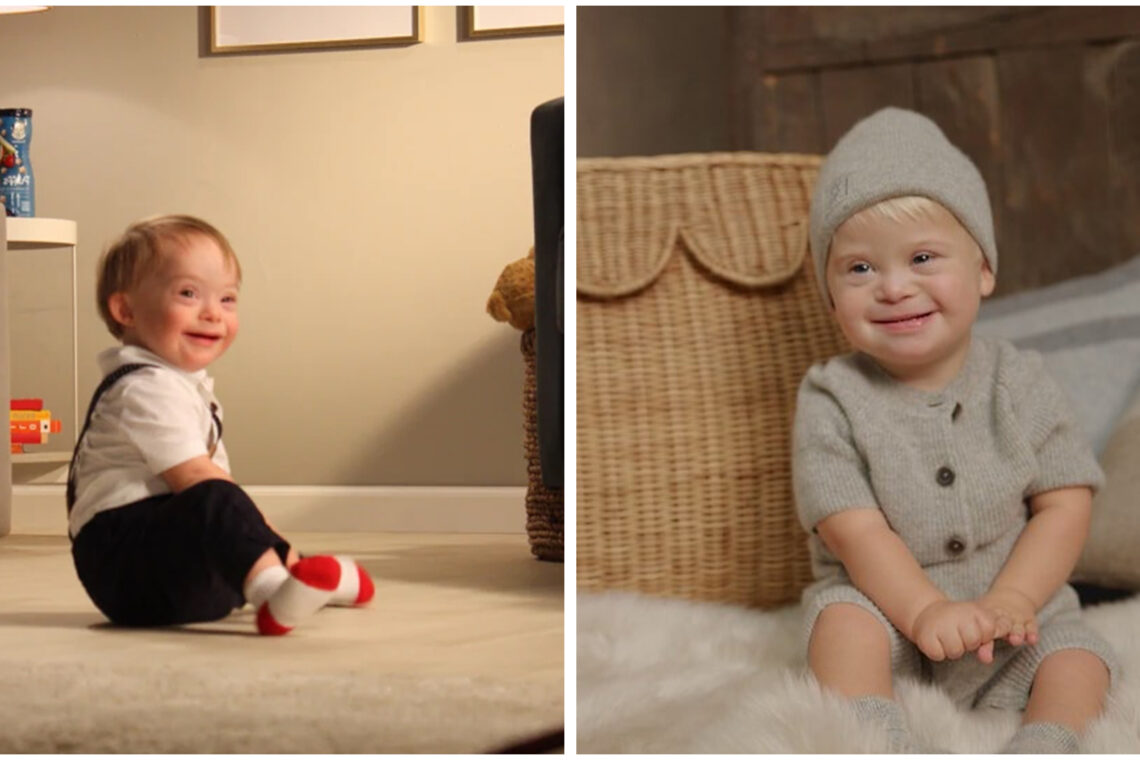
In the ever-evolving landscape of fashion and branding, a notable shift is underway as companies strive to reflect the diverse makeup of their audiences. The traditional paradigm of beauty, once dominated by a narrow representation, is gradually giving way to a more inclusive approach that embraces individuals from various backgrounds and identities. This movement is not just about aesthetics; it signifies a profound recognition of the need for representation across all demographics, including those who have often been marginalized.
A significant development in this inclusivity journey was marked by Victoria’s Secret, which recently made headlines by featuring a model with Down syndrome in their campaigns. This milestone not only highlights the strides being made within the fashion industry but also serves as a wake-up call for other brands to broaden their horizons. While we celebrate these advancements, it is crucial to acknowledge that there remain numerous communities that continue to be underrepresented, particularly individuals with disabilities.
One such brand stepping up to the plate is Banana Republic, which has launched a new collection for babies, featuring a young boy with Down syndrome in their promotional materials. This initiative not only adds a refreshing perspective to their marketing strategy but also emphasizes a commitment to inclusivity. The announcement of the BR Baby collection underscores a broader promise from Banana Republic to foster a more sustainable and welcoming environment for all.
In a recent statement, the company elaborated on its mission, stating that the BR Baby collection was crafted with an intention to enhance sustainability while also embracing diversity in all forms. The brand expressed its excitement in casting this young boy for his inaugural modeling opportunity, highlighting the significance of representing individuals with disabilities in mainstream media. The inclusion of such diverse talent not only reflects a shift in societal values but also demonstrates a growing understanding of the importance of visibility for all communities.
Katie Driscoll, who leads the organization Changing the Face of Beauty, has been an ardent advocate for greater representation of individuals with disabilities in advertising and media. Her reaction to Banana Republic’s initiative was one of elation, emphasizing that the disabled community has historically been overlooked in conversations surrounding diversity. Driscoll points out that the disability community is one of the largest minorities globally, with a staggering statistic that one in five families has a connection to someone living with a disability.
This realization is vital, as it emphasizes the need for brands to recognize and address the diversity that exists within our society. The act of seeing oneself represented in various aspects of life, particularly in fashion and advertising, can have a profound impact on self-identity and societal perceptions. For many individuals with disabilities, the opportunity to be represented in a positive light can contribute to greater acceptance and understanding within society.
The move by Banana Republic to feature a baby with Down syndrome is not just a marketing strategy; it signifies a cultural shift towards more genuine representation. It challenges other brands to reevaluate their practices and consider how they can actively engage with underrepresented communities. By including diverse models in their campaigns, brands can foster a sense of belonging and validate the experiences of individuals who have long been relegated to the sidelines.
As the conversation around inclusivity continues to grow, it is essential for companies to recognize the power they wield in shaping societal narratives. The representation of individuals with disabilities in advertising not only serves to inspire but also provides a platform for advocacy and awareness. When brands embrace diversity, they help dismantle stereotypes and promote understanding, paving the way for a more inclusive future.
Moreover, it is crucial for these initiatives to go beyond mere tokenism. Genuine engagement with the disabled community involves listening to their voices, understanding their needs, and incorporating their perspectives into marketing strategies. This requires a commitment to ongoing dialogue and collaboration, ensuring that the representation is authentic and meaningful.
The impact of such initiatives extends beyond the advertising realm. When consumers see themselves reflected in the brands they support, it fosters loyalty and trust. The emotional connection established through inclusive representation can enhance brand perception and encourage customers to advocate for these companies within their networks.
In conclusion, the fashion industry is at a pivotal moment, with brands like Banana Republic leading the charge toward inclusivity and diversity. As they take bold steps to include individuals with disabilities in their campaigns, it sets a precedent for others to follow suit. The ongoing journey towards representation is not merely about changing the faces seen in advertisements; it is about fostering an environment where everyone feels valued and acknowledged.
As society continues to evolve, the demand for representation in all its forms will only grow stronger. Brands that embrace this challenge will not only enrich their own narratives but will also contribute to a larger societal movement toward inclusivity. By shining a light on the beauty of diversity, we can create a world where every individual, regardless of their background or abilities, is celebrated and empowered. The future of fashion and branding lies in this inclusive vision, paving the way for a more equitable and compassionate society.